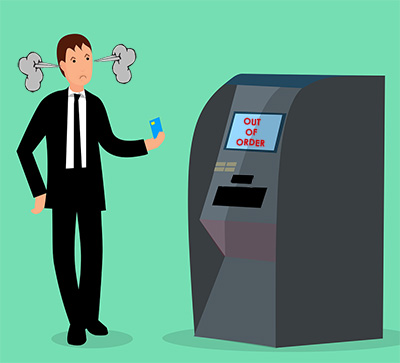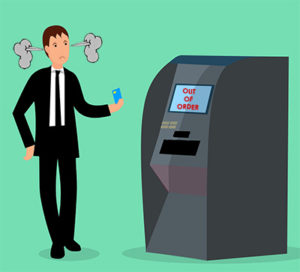
As a branch manager, it is important to keep your location running as efficiently and effectively as possible. This means your fintech should be operational at all times. Even just five minutes of downtime can cause customers to leave for a new bank. One of the machines that customers rely on the most is the ATM. People are accustomed to not needing to enter the bank to do their banking. If a machine has a problem and doesn’t work, many clients would rather drive to another location and use an ATM than wait in a branch line. Banking nowadays is all about convenience and speed. One way to improve your fintech uptime is with NCR ATM service by manufacturer trained technicians.
What Does it Mean to be Manufacturer Trained?
There is one big difference between manufacturer trained technicians and those that are not. In short, it is that their training is done by the manufacturer of the equipment. The flip-side of this is technicians that are trained by general machine specialists, but not necessarily the manufacturer. Most manufacturer trained technicians also receive either a certification or credential once they complete their training. A good parallel example would be the owner of an exotic car having the choice of bringing his car to the neighborhood mechanic or the dealership to do repairs. For a less expensive machine, the local mechanic might be enough. However, for the lifetime of the car, it is better for it to be repaired by the dealer.
What is the Advantage to a Technician That is Manufacturer Trained?
The biggest advantage is that manufacturer trained technicians have access to information about the machines direct from the maker of the units. There is no one better to teach someone how to fix something than the person who made it. Errors are not just resolved faster, but with confidence that the problem is fully fixed, not just patched. Every minute an ATM is out of order is bad. Out of order machines, although usually never the fault of the branch employees, can come across as incompetence. This is the last thing you want to appear as a bank where people are trusting you with their money. To put your best face forward, only allow manufacturer trained technicians perform your NCR ATM service.
NCR ATM Service Starts with Choosing a Supplier
First off, we want to let you know you’ve made the right choice by selecting an NCR ATM. They have been providing banks, restaurants, and retailers with technology since 1884. Selecting the right supplier is just as important a decision. A relationship between a branch and their ATM supplier should not end after the sale is complete. Especially, if you are purchasing an NCR machine, you should only deal with a channel partner. This means that these suppliers have partnered with only NCR to supply and service their machines. It also means that their technicians are trained by NCR and only repair NCR machines making them practically experts.
Aside from checking on their NCR partner status, inquire as to what other services they provide. Rather than having to buy equipment from a dozen different sellers, it is ideal if you can find and NCR dealer in NJ that also provides security tools, teller products, and more. Also, ensure they have their own repair trucks and a warehouse full of parts and machines to expedite repairs that can’t be made remotely.
Why is NCR ATM Service Important to branches?
When you boil it down to the simplest answer, NCR ATM service is important to branches because people want convenience. Once they are used to that convenience, to take it away or make it unavailable for any length of time is a huge mistake. This means that a branches fintech, including NCR ATMs, should be functional as much as possible. Any downtime at all can be detrimental to a branch’s success. Fintech is only valuable to a branch when it works.
Read this to learn more about NCR ATM service and its relationship to community branches.


0 Comments